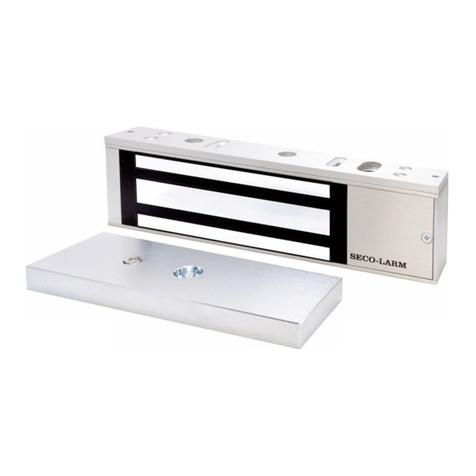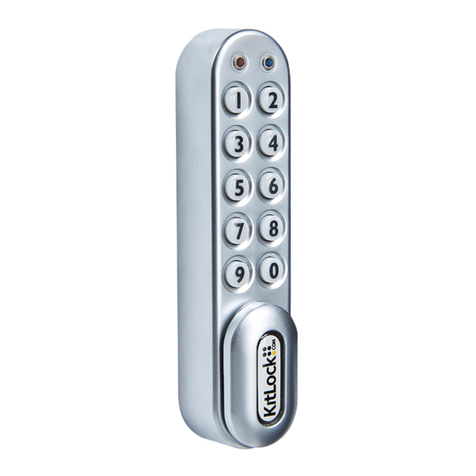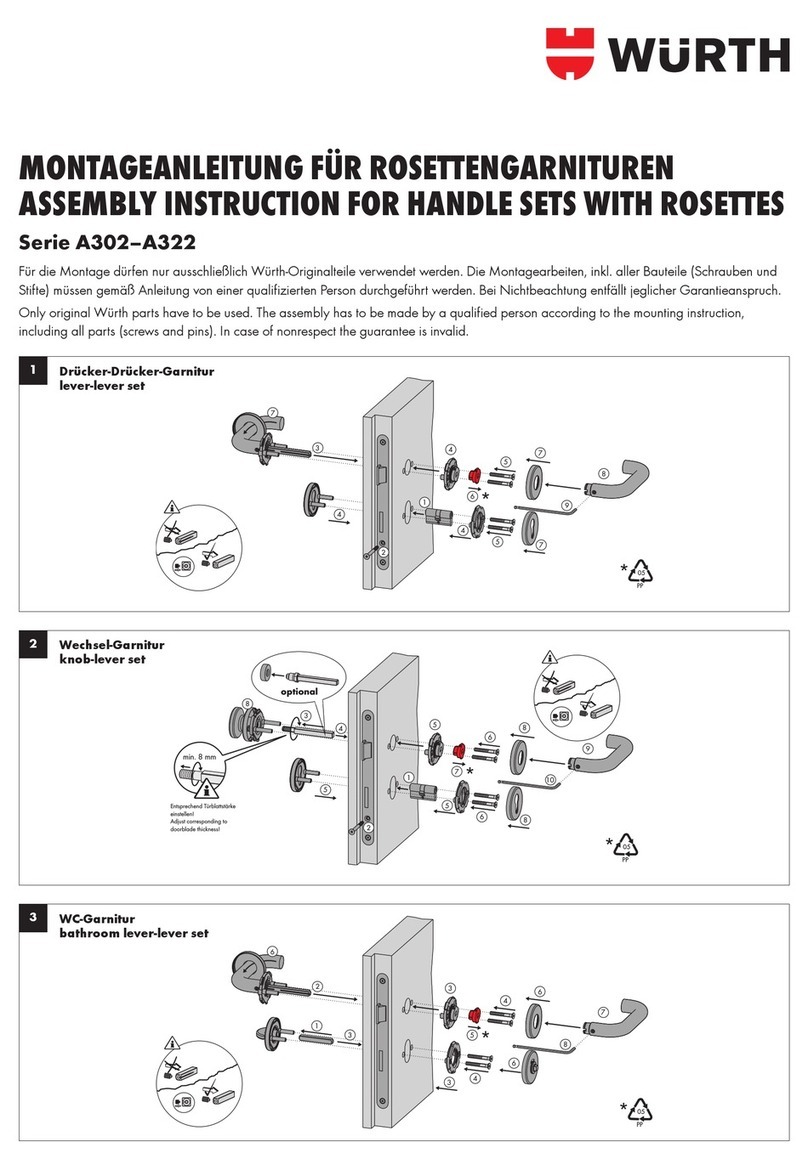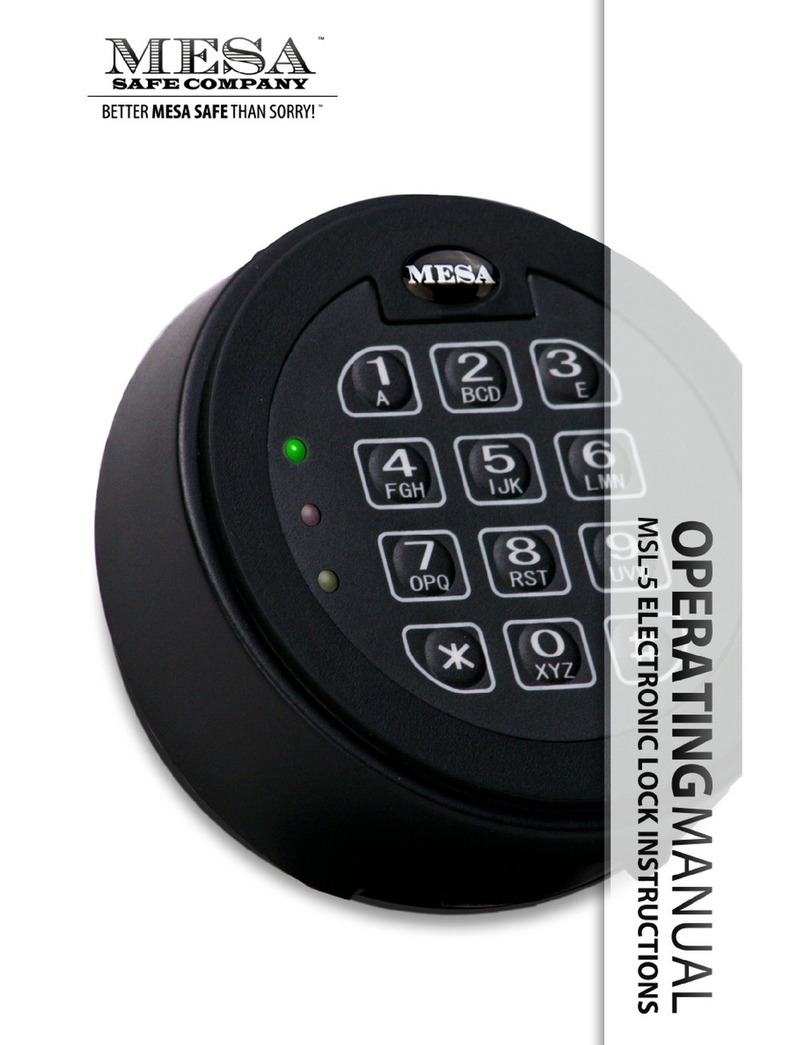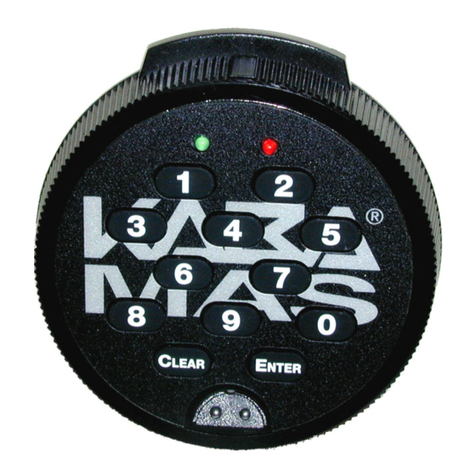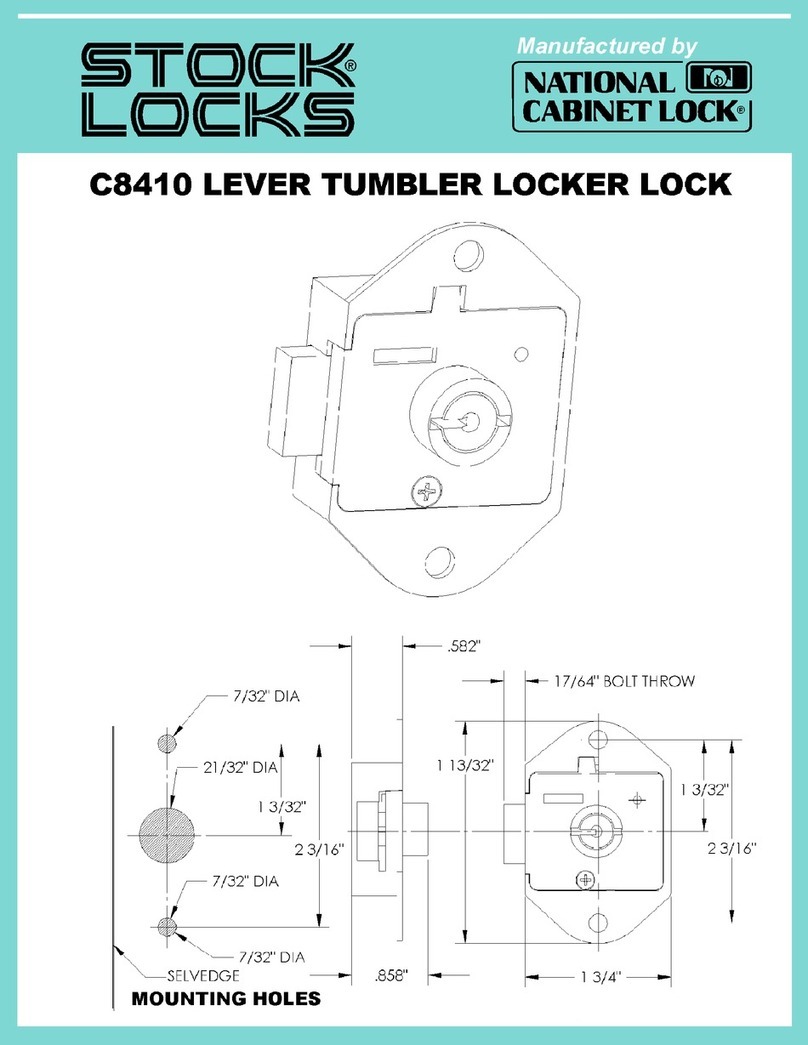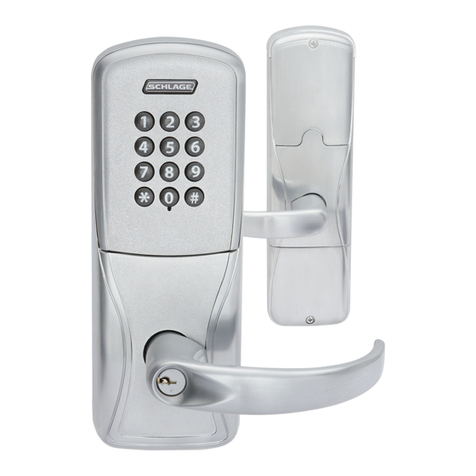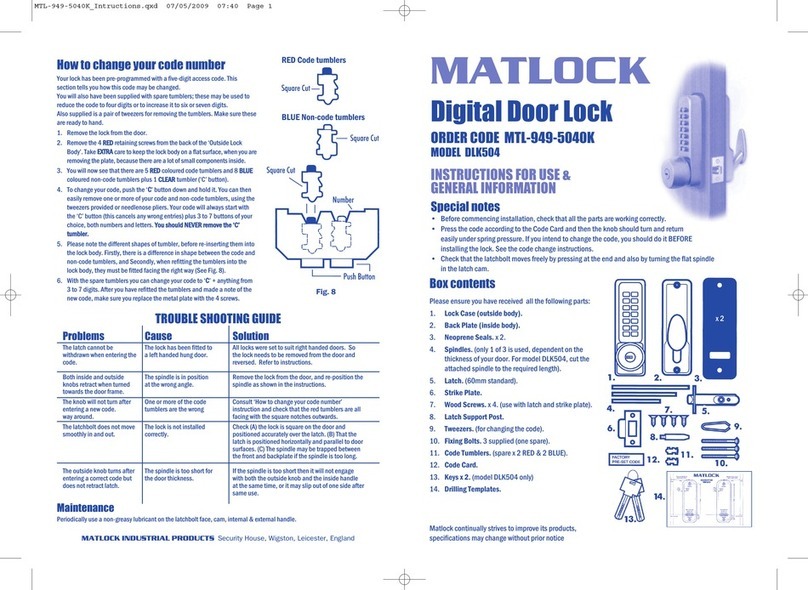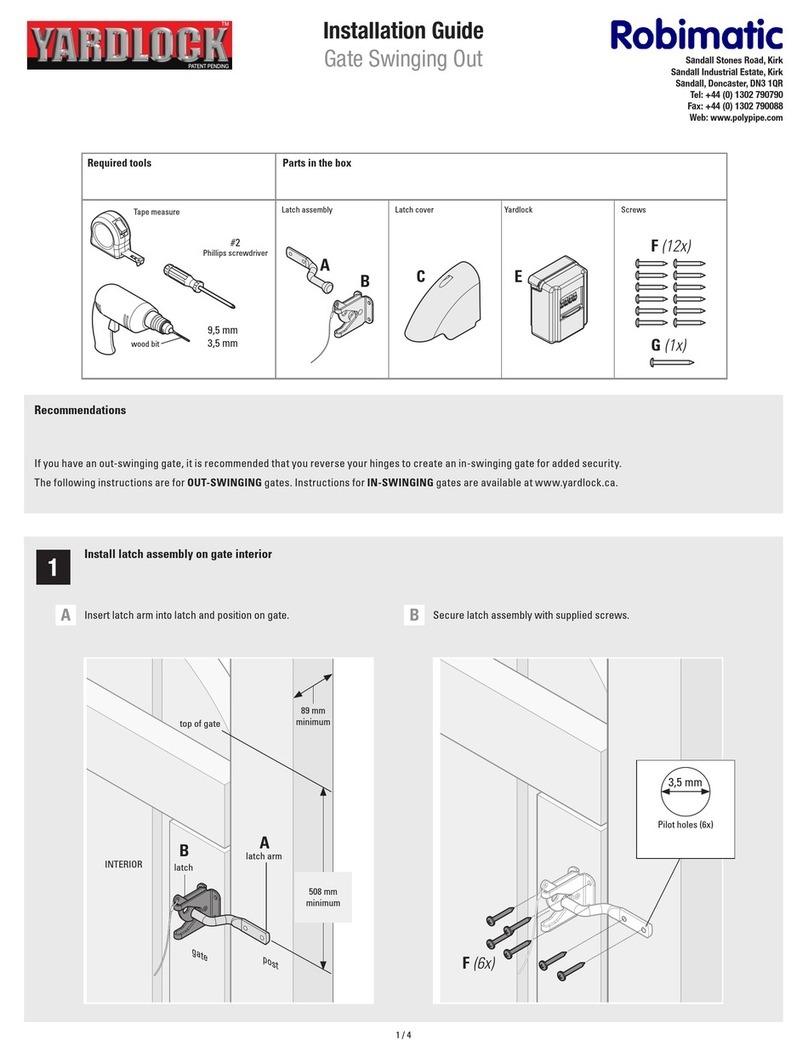Maclean Manta Ray LL-1 User manual

P: 855.MPS.SHI P
macleanpow er. com
48 1 MU NN RD SUITE 300
FORT MILL, SC 29715
LL-1 Anchor Locking Kit Operating Manual
Summer 2020

P: 85 5.MPS.SHI P
macleanpow er. com
48 1 MU NN RD SUITE 300
FORT MILL, SC 29715
DESCRIPTION
The LL-1 Anchor locking kit is designed to be used with Manta Ray anchors that
utilize Utility Style SAR-10, SAR-34, or SAR-58 style anchor rods. The LL-1 ASB
adapter setting bar is (1”- 8UNC) threaded on each end. One end is compatible with
the SAR-10 and SAR-34 anchor rods and the other is compatible with the SAR-58
(11/16-11 UNS) anchor rods. If using other types of anchor rods, please consult with
your Manta Ray distributor to ensure compatibility between your anchor rods and the
Anchor Locking Kit. Other kits may include different adapter setting bars and/or
tapered jaw set depending on the rod size being used.
The LL-1 Anchor Locking Kit (#50127) consists of the following components:
•LL-1FPM 10-ton Jack assembly (#5014)
•LL-1TJ Tapered Jaw Set (#50148)
•LL-1ASB Adapter Setting Bar (#50132)
•Metal Box for LL-1FPM (#50250)
•5/32 Hex Driver (For adjustment of the
Bypass Valve on LL-1FPM) #51188
Refer to Drawing #E1012-A Page 1 for a pictorial view.
The Anchor Locking Kit does not include a hydraulic power supply or hydraulic
hoses. These must be supplied separately. The following power units and hoses are
designed to power the LL-1 and are available from your Manta Ray Distributor:
•#50382 GPU18-8 CE 18 HP 8 gpm / 2000 psi portable power unit
•#50255 GPU-2 HP 3 gpm / 2000 psi portable power unit
•#50606 Set of 2 HC-16-25 ½” x 25 ft. Hydraulic hoses with HTMA couplers
The LL-1 Anchor Locking kit is designed to proof test Manta Ray anchors that are
installed at angles from 30 degrees to 90 degrees to the Horizontal for normal utility
guy line anchors and tiebacks. It is designed to automatically align to the actual
installed angle of the Manta Ray anchor. The LL-1 FPM 10-ton jack assembly has a
stroke of 8”. Most normal operations require 3 – 4 full strokes of the jack to properly
lock and test an anchor. The design of the Tapered jaw set and the Adapter setting
bar make this operation easy and quick.

P: 85 5.MPS.SHI P
macleanpow er. com
48 1 MU NN RD SUITE 300
FORT MILL, SC 29715
CONTROLS
The LL-1FPM 10-ton jack assembly has a manual control valve mounted directly on
the body of the jack that allows the operator to control and read the anchor capacity
without referencing a conversion chart. The jack is extended (to pull upward on an
anchor) by pushing the control valve handle toward the body of the jack. To retract,
pull the control valve handle away from the body of the jack. The control valve handle
is spring loaded to return automatically to the neutral position. The hydraulic design of
the control valve is not designed to hold hydraulic pressure when the valve is in the
neutral position. If it is desired to hold a constant load, then the valve handle must be
held in the open position for the duration of the load hold.
See paragraph 7 RECOMMENDED PROOF TEST METHOD.
HYDRAULIC RATING
HTMA type II
HYDRAULIC SAFETY
The Control valve on the LL-1FPM 10-ton jack assembly contains a simple hydraulic
bypass valve that limits the maximum hydraulic pressure to safe levels. This is factory
set to 1600 –1800 psi (at an input flow rate of 8 gpm) which corresponds to 16000 –
18000 pounds of force. This is field adjustable for different anchoring requirements.
See paragraph 8 ADJUSTING THE BYPASS VALVE.
Adjustments of this bypass valve are to be done only by a qualified personnel. When
used in conjunction with the GPU-2 power unit or alternate power units listed in
paragraph 9 OTHER POWER UNITS, the bypass valve must be adjusted.

P: 85 5.MPS.SHI P
macleanpow er. com
48 1 MU NN RD SUITE 300
FORT MILL, SC 29715
SET UP
Please refer to Drawing #E1012-A
After the anchor has been driven to the proper depth (including allowance for Load
locking pull back) follow these steps to set up the LL-1 Anchor Locking Kit.
1. Thread the LL-1ASB Adapter setting bar onto the anchor rod.
2. Place the LL-1BP Base Plate over the Adapter Setting Bar being careful to
use the proper alignment so the small angle iron cross member is closest to
the pole that is to be guyed. See Drawing #E1012-A Page 2
3. Place the LL-1FPM jack assembly over the Adapter Setting Bar and slide it
down until the knife edges on the Jack engage stops on the Base plate.
a. For anchors installed at an angle to the horizontal, be sure that the
knife edges engage the stops closest to the small cross member.
b. For anchors installed vertically (90 degrees to the horizontal), be sure
the knife edges are located between the two sets of stops on the base.
4. Place the Tapered jaw set around the Adapter setting bar and securely into
the tapered top of the LL-1FPM Jack assembly.
5. Connect the hydraulic hoses between the hydraulic power supply and the LL-
1FPM Jack assembly. See paragraph 11 TRAPPED PRESSURE.
OPERATION
CAUTION: The LL-1 Anchor Locking Kit is capable of pulling with forces up to
20000 pounds. The following precautions must be taken:
1. Never apply more than 2000 psi to the unit.
2. Use appropriate safety equipment including, but not limited to: steel toe work
boots, leather work gloves, hard hats, and safety glasses.
3. Do not stand in line with the adapter setting bar or anchor rod during anchor
locking. Stand off to the side.
4. Keep hands, feet, clothing and hydraulic hoses away from the base plate and
tapered jaw set during Load Locking.
5. Always designate one operator and one helper. The helper and the operator
work together to perform the set up, but only the operator performs the actual
operation of the LL-1FPM Jack assembly and proof testing the anchor.
6. Be sure to set the bypass valve on the LL-1FPM 10-ton Jack assy to limit the
applied load to the desired value. The LL-1FPM 10-ton Jack assy comes from
the factory preset to 16000 –18000 lbs bypass at 8 gpm input flow rate.

P: 85 5.MPS.SHI P
macleanpow er. com
48 1 MU NN RD SUITE 300
FORT MILL, SC 29715
After set up is complete, follow these steps to lock and test a Manta Ray anchor:
1. Start the hydraulic power source and activate the hydraulic flow to the LL-1FPM
jack assembly. Set the hydraulic power source to achieve a minimum of 2.0 gpm
and no more than 8.0 gpm. 4-5 gpm is considered optimum.
2. Check to be certain that all hands, feet, clothing, hydraulic hoses, tools, etc. are
away from the base plate before activating the jack. During load locking the base
plate will sink into the soil and can trap hands, feet ,clothing, etc. See caution #4
above.
3. Shift the control valve to the extend position (toward the jack body) to extend the
jack. During the stroke of the jack observe the reading on the force gauge. t is
common in most soils that the reading will be below 5000 lbs for the first stroke.
When the Jack reaches the end, its stroke it will stop automatically by virtue of
internal stops. This is called “topping out”. When the jack tops out the load,
indication on the gauge will increase rapidly to the bypass setting- this is a false
indication. Retract the jack by pulling the valve handle away from the body. The
tapered Jaws should release by themselves. If they do not release, tap the side
of the tapered top of the jack with a hammer. Fully retract the jack. Lubricate the
outside of the Tapered Jaw set and the inside of the tapered top of the jack with
any oil or lubricant and reset the tapered jaws. Hydraulic oil works well as a
lubricant for the tapered jaws.
4. Repeat step 6-2 as required until either the required load is read on the gauge or
the minimum allowable depth of the anchor is achieved.
In some cases, 4 –5 strokes of the load locker will be required to achieve the proper
load indication on the gauge. f the load requirement is not met, then a larger size
anchor or a greater depth of installation is required.
A formal proof test can be required after locking the anchor. This is usually done by
holding a constant load over a period of time and monitoring the deflection of the
anchor rod.
See paragraph 7 RECOMMENDED PROOF TEST METHOD.

P: 85 5.MPS.SHI P
macleanpow er. com
48 1 MU NN RD SUITE 300
FORT MILL, SC 29715
RECOMMENDED PROOF TEST METHOD
Please refer to Drawing #E1012-A
To achieve the best accuracy of Load Locking and Proof testing, set the Bypass Valve
on the Jack to the required proof test value prior to Load Locking or proof testing. This
allows the operator to fully shift the valve to the extend position while monitoring
movement of the anchor without having to worry about controlling the load by
“feathering” the control valve. This method of load locking using the LL-1 results in a
load accuracy of +/- 10% in the range of 5000 to 20000 lbs. If greater accuracy is
required or if the application is critical, then the user should have the LL-1 FPM jack and
power source combination calibrated by an independent test Laboratory.
ADJUSTING THE BYPASS VALVE
WARNING: The bypass valve setting is dependent upon the input flow and pressure.
Care should be taken to ensure that the flow and pressure supplied by the hydraulic
power unit are the same as those that will be used in service.
1. Place the jack assembly on the floor, bench or ground without the base plate,
tapered jaws or adapter setting bar.
2. Connect the jack to the same hydraulic power source that will be used in service
for locking anchors.
3. Start the hydraulic power source and set the throttle at the same position that will
be used in service.
4. Extend the jack to the top of its stroke. Keep the control valve shifted fully to the
extend position. The bypass valve will now be limiting the hydraulic pressure.
You can usually hear a “screeching” sound when the bypass valve is operating.
Read the bypass setting directly off the force gauge.
5. If the by-pass setting is not correct, follow steps 6 through 10 to adjust it
6. Relieve the bypass pressure by retracting the jack about 1”.
7. Refer to Drawing 50141 Sheet 1 for the location of the bypass valve, adjusting
the screw on the control valve. Loosen the lock nut using a 13mm or adjustable
wrench.
8. Use the 5/32 hex driver provided in the Load Locking Kit to turn the adjusting
screw. Thread the adjusting screw in- (clockwise), to increase the bypass setting.
Thread the adjusting screw out- (counterclockwise), to reduce the bypass setting.
Repeat step t4 o read the new bypass setting.
9. Repeat steps 4-8 until the bypass setting is at the desired level.
10.Tighten the lock nut.

P: 85 5.MPS.SHI P
macleanpow er. com
48 1 MU NN RD SUITE 300
FORT MILL, SC 29715
OTHER POWER UNITS
Any compatible open center hydraulic power supply that supplies 2-8 gpm and up to
2000 psi is acceptable for use with the LL-1. Be sure that the hydraulic flow direction
of the power unit matches the in and out labels on the control valve on the LL-1FPM
10 Ton Jack Assy. Reversed flow is a common problem and the jack will not extend
or retract when the control valve handle is shifted.
Caution: LL-1FPM jack assembly is a double acting jack designed to be operated with
hydraulic power sources capable of 2000 psi maximum and 2 –8 gpm. If other power
sources are used, then the user does so at their own risk and it is highly recommended
that the user consult with a professional hydraulic supplier to determine the
combination is safe and that the bypass valve on the LL-1FPM is properly set.
TROUBLE SHOOTING
Symptom, Probable Cause & Remedy
Cannot connect hydraulic couplers: Trapped pressure –see paragraph 11
TRAPPED PRESSURE
Jack does not extend: If the hydraulic flow not activated on power source, turn on
the flow.
Hydraulic flow direction backwards: Check that the pressure port from hydraulic
power supply is mated to the port on the LL-1FPM Valve labeled “IN”, and the return
(tank) port on the power source is mated to the port on the Valve labeled “OUT”.
See Drawing #50141 Sheet 1 of 2 for location of the port labels on the valve.
Jack does not achieve required load, but anchor is not moving: Hydraulic flow
from power unit is too low. Open throttle on the power source to achieve a higher
flow rate. If this does not solve the problem, then readjust the bypass valve. This is a
common problem with alternate low flow rate power rate units.
Gauge reads 4000lb load with valve handle in neutral position, but there is no
load on anchor: This is a characteristic of the hydraulic design of the control valve
called trapped back pressure. Back pressure from hydraulic flow is trapped on both
sides of the jack piston and registers on the gauge when the valve is shifted into the
neutral position. It does not affect the accuracy of the gauge reading if the
recommended method of proof testing is followed. The phenomenon manifests itself
to a greater degree at higher flow rates like 5- 8 gpm and is very evident when the

P: 85 5.MPS.SHI P
macleanpow er. com
48 1 MU NN RD SUITE 300
FORT MILL, SC 29715
jack is extended very quickly under no load. In this situation, the back pressure and
the internal friction of the jack add together to produce high gauge readings
associated with the rapid movement of the jack. It is virtually nonexistent at lower
flow rates like 1-2 gpm. The gauge reading will drop to 0 when the circuit is
deactivated, the hydraulic power supply is turned off and the control valve handle is
cycled back and forth between the extend and retract positions. Be sure to follow this
procedure prior to disconnecting the hydraulic hoses. If the trapped back pressure is
not relieved prior to disconnecting the hoses, the hydraulic couplers will be difficult
and sometimes impossible to reconnect. If the gauge reading does not drop to zero
with everything turned off after cycling the valve, then the gauge is defective and
should be replaced.
TRAPPED PRESSURE
Trapped pressure can cause hydraulic couplers to become difficult and sometimes
impossible to connect by hand. This is a normal occurrence with almost all types of
hydraulic tools and couplers.
The three most common sources of trapped pressure are:
1. Failure to relieve any trapped back pressure in the tool circuit prior to
uncoupling hoses from tools. This is avoided by cycling the tool control valves
(on and off, up and down, extend and retract, etc.) several times after turning
off the hydraulic flow from the power unit but prior to uncoupling.
2. Sunlight heating hoses, tools, especially dark colored items.
3. Uncoupling the hoses prior to turning off the hydraulic flow from the power
unit.
The proper practices when switching hydraulic tools will avoid trapped pressure:
1. Turn hydraulic flow off at power unit.
2. Cycle the tool control valve off and on several times.
3. Disconnect hoses from tool #1.
4. Connect couplers to tool #2.
If trapped pressure does occur, it must be relieved. Here are some suggestions on
how:
1. Loosen a fitting very slowly and carefully to allow some fluid to “leak out”. This
will relieve the trapped pressure.
a. CAUTION: Hydraulic fluid can squirt out at very high velocities which
can cause injury. Always cover the fitting to be loosened with a rag and
always wear appropriate safety equipment especially glasses.
b. The best choice is a JIC or Flare fitting because of its ease of loosening
and tightening. If an O-ring style fitting is chosen, be sure to properly

P: 85 5.MPS.SHI P
macleanpow er. com
48 1 MU NN RD SUITE 300
FORT MILL, SC 29715
reposition the O-ring prior to retightening the fitting or the O-ring will
become damaged and a new O-ring will be required.
2. On the LL-1 FPM 10-ton jack, the best choice is the JIC joint between the
power input hoses and the control valve. Refer to Drawing 50141
3. Sometimes repeated cycling of the control valve on the LL-1 FPM will reduce
the pressure enough to force couplers together.
4. Sometimes repeated attempts to connect a coupler will allow enough fluid to
“leak out” that the connection can be made.
SPARE PARTS
Spare parts for the LL-1 Anchor Locking kit are available from your Manta Ray
distributor. Refer to Drawing #E1012 for the major component parts of the LL-1 Anchor
Locking Kit. Refer to Drawing 50141for the plumbing components of the LL-1FPM 10-
ton jack assembly.

P: 85 5.MPS.SHI P
macleanpow er. com
48 1 MU NN RD SUITE 300
FORT MILL, SC 29715

P: 85 5.MPS.SHI P
macleanpow er. com
48 1 MU NN RD SUITE 300
FORT MILL, SC 29715

P: 85 5.MPS.SHI P
macleanpow er. com
48 1 MU NN RD SUITE 300
FORT MILL, SC 29715
116
2
14 15 514 15
17
4
446
2
47 9 78
12 11 510 4
18
13
6
Table of contents
Popular Lock manuals by other brands
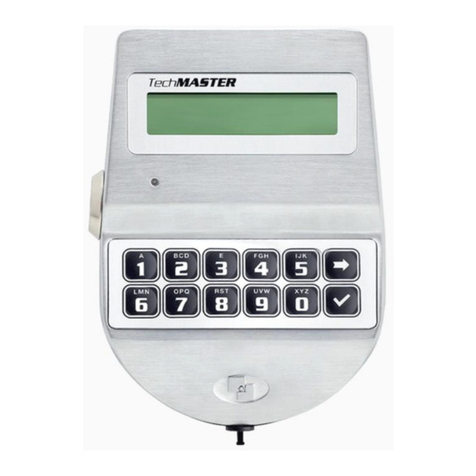
Tecnosicurezza
Tecnosicurezza TechMaster T9530/GR installation instructions
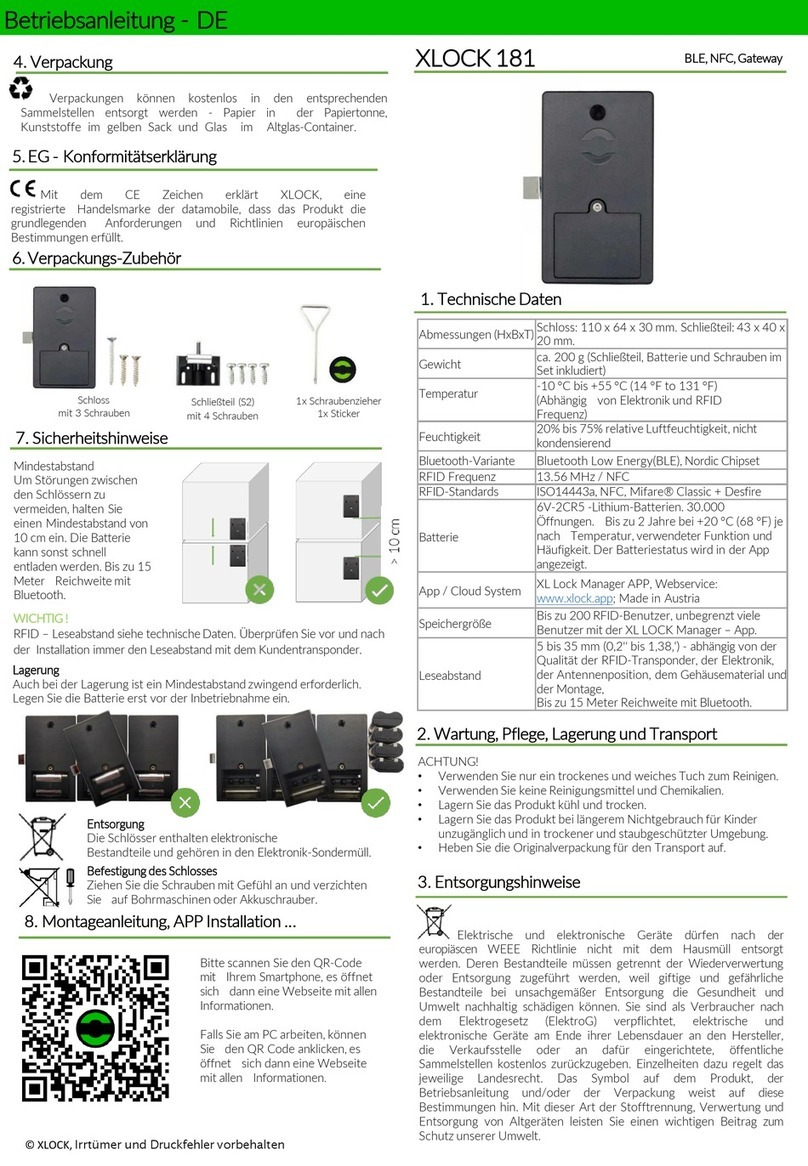
XLOCK
XLOCK 181 instruction manual

iglooworks
iglooworks IoT Deadbolt Installer/user guide
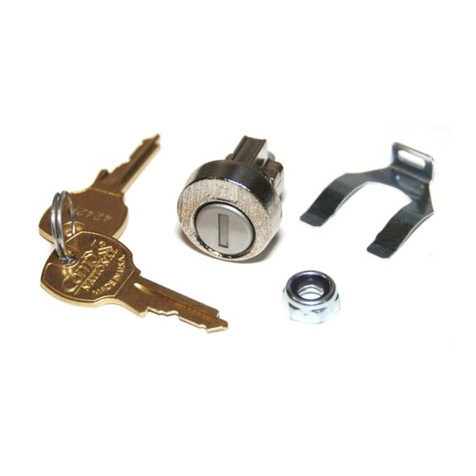
Stock Loks
Stock Loks C8733 instruction sheet
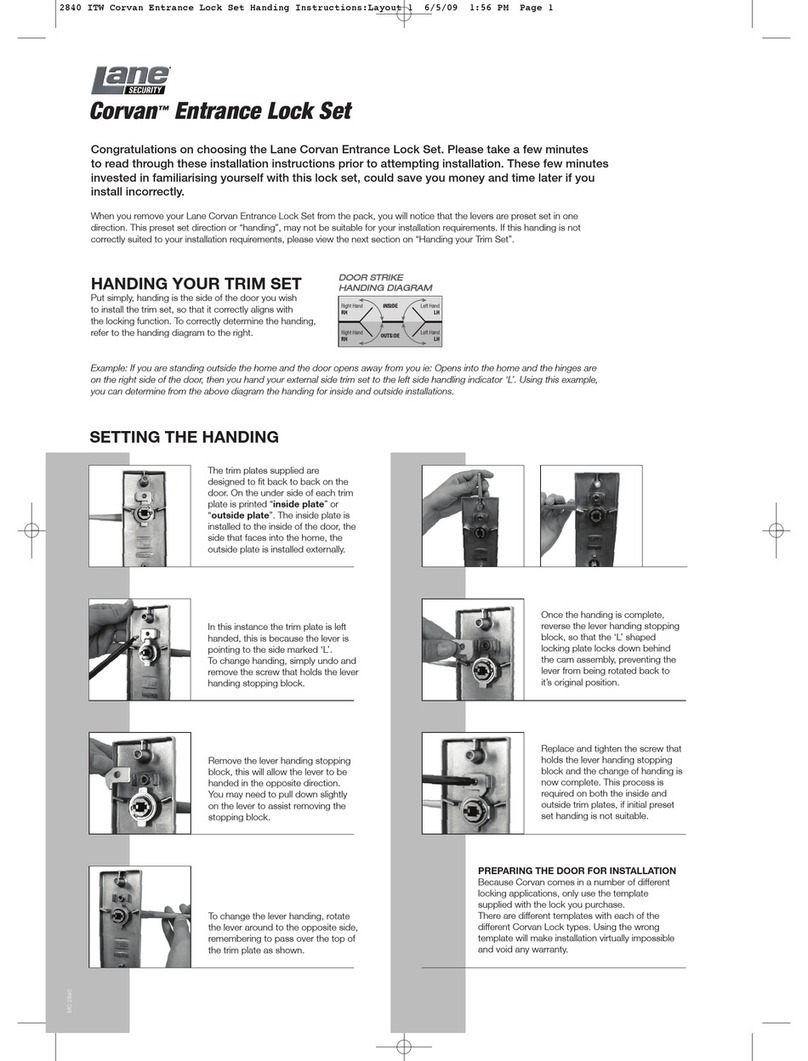
Lane Security
Lane Security Corvan Entrance Lock Set installation instructions
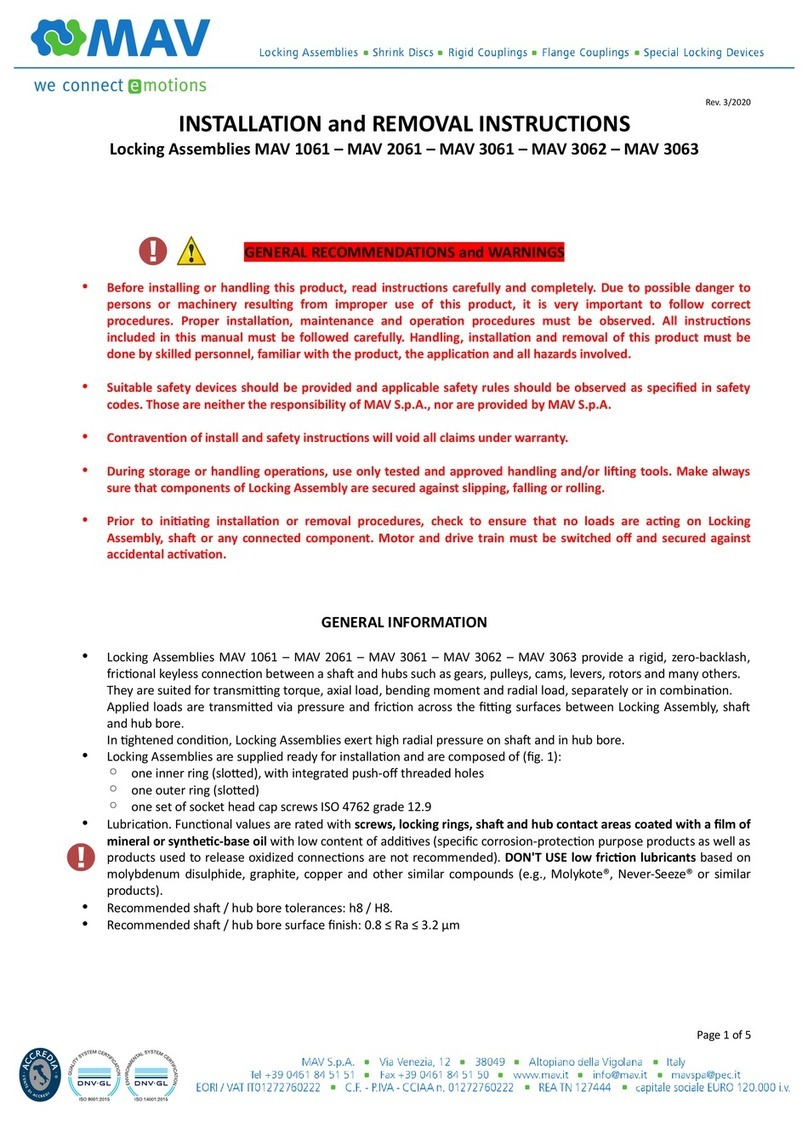
MAV
MAV 1061 Installation and Removal Instructions
